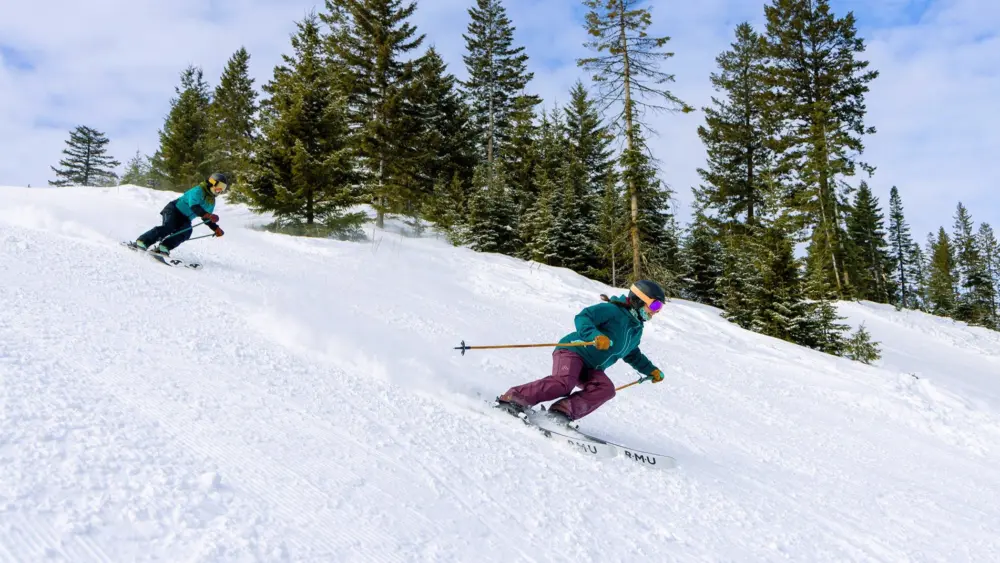The U.S. Fish and Wildlife Service’s former longtime grizzly bear recovery manager has written a new report that recommends against grizzly bear delisting and details how he believes the federal recovery plan he wrote in 1993 should be updated to treat grizzlies in the Northern Rockies as a single population and to include new research detailing how to connect separate grizzly populations to ensure their long-term recovery.
Based on the report, a group of 15 environmental and animal conservation groups on Wednesday sent a petition to the Fish and Wildlife Service asking it to update its Grizzly Bear Recovery Plan just weeks before the agency is set to issue decisions on whether to delist the animals from Endangered Species Act protections in two ecosystems in Montana or in all the Lower 48 states.
Chris Servheen, the Missoula-based grizzly bear recovery coordinator for the Fish and Wildlife Service from 1981 to 2016, said he had been working on the new report for the past year and that its finalization simply happened to come just before the agency’s decisions are released. Servheen is currently the co-chair of the North American Bears Expert Team for the International Union for Conservation of Nature.
The Fish and Wildlife Service said in court filings earlier this year it would issue decisions on whether to de-list grizzly bears in the Greater Yellowstone Ecosystem, the Northern Continental Divide Ecosystem, and the Lower 48 states by the end of January and likely ahead of the change in administrations.
Those decisions are being made in response to requests for delisting from the states of Montana, Wyoming and Idaho, whose leadership believe grizzly bears have recovered either in the particular ecosystems or in the U.S. as a whole and want to be able to manage the species at a state level.
But Servheen and the groups that filed the petition Wednesday morning do not believe grizzlies have recovered enough to warrant delisting in response to any of the states’ petitions. They point to 90 documented grizzly bear deaths so far this year in the Northern Rockies – including 73 in the Greater Yellowstone Ecosystem – as showing that there is still work to do before the species’ fate goes into the hands of governors who would like to eventually open up grizzly hunting seasons.
“The service has been managing bears under the same plan for the last 31 years, and yet so much has changed in the world of grizzly bear science and conservation over the last three decades, when the plan was first revised,” Earthjustice senior attorney Mary Cochenour said in a news conference detailing the petition and report. “The current practice of managing bears in isolated populations just isn’t working anymore, and recovery is more than just the number of bears.”
Servheen’s report says the 1993 revision to the recovery plan that he led now fails to account for the population increases in the Northern Rockies or efforts during the past several years by states including Montana to create or enact programs focused on reducing predator populations, including for once-protected animals like wolves and grizzlies.
The report proposes managing grizzly bears as a single metapopulation in the Northern Rockies rather than the current system in which there are five separate recovery zones in Montana, Wyoming, Idaho, and eastern Washington. While there were only an estimated 300 to 400 grizzlies when the species was listed in 1975, that has now grown to about 2,000 in the five recovery zones, Servheen said.
And it recommends that federal and state governments impose stronger regulations to cut down on human-caused grizzly bear deaths and the sprawl of homes and businesses into grizzly bear territory, especially the connectivity zones where scientists hope the different ecosystem populations can at some point connect in order to bolster the overall population and diversify the species’ gene pool.
“These revisions will enhance resiliency and build a strong recovery system in the 4% of their historical range where grizzlies remain within the conterminous U.S.,” the report says. “Rather than rush to delist the grizzly bear, this plan invites Tribal, State, and Federal agencies to come together to build a strong and lasting recovery framework for this vulnerable and iconic species.”
Servheen’s report says that if the Fish and Wildlife Service does not adopt his proposed revisions to the recovery plan, the grizzly bear in the Northern Rockies “remains in danger and cannot be considered for delisting.”
It says that since grizzlies have moved beyond the boundaries of each recovery area, treating them as a metapopulation makes more sense because grizzlies can eventually be connected between the separate areas and can be managed as a single population, and not with set population guidance for each area.
“A naturally functioning metapopulation of interconnected grizzly bears in the Northern U.S. Rockies will be more demographically and genetically resilient to the ongoing impacts of climate change and increasing levels of human activity in the area,” the report says.
The report and the petition also suggest that state and local governments, along with federal land agencies, need to better manage sprawl into grizzly bear territory, find ways to educate residents living in grizzly territory to keep themselves and the bears safe and out of conflict, and reduce recreation pressure on grizzly bears.
That is so the bears have a greater chance to move through the connectivity areas, to keep them focused on wild food sources, and to prevent humans from artificially influencing grizzly bear habitat, several representatives of the 15 groups said in a news conference Tuesday.
Servheen pointed out that the Montana Grizzly Bear Advisory Council convened by former Democratic Gov. Steve Bullock in 2020 issued recommendations that the final report said “support our vision for an interconnected metapopulation of grizzly bears in Montana.” But he said that vision has changed under Republican Gov. Greg Gianforte’s administration and with some lawmakers’ “anti-predatory attitudes.”
He said regulations including allowing for hound hunting of black bears and baited wolf traps and snares were among the newly created threats to grizzly bears. Some of the same groups involved in the petition have successfully gone to court to restrict wolf trapping seasons in Montana and Idaho to when grizzlies are most likely to be inside their winter dens.
“Why are the states so anti-carnivore? Well, it seems to be based on an abnormal hatred of carnivores among some people,” Servheen said. “It is not reasonable and it’s not based on facts. It’s basically the anti-predator attitudes of the 1800s in some people’s minds. These state policies toward carnivores have no place in modern-day science and fact-based wildlife management.”
Kristin Combs, the executive director of Wyoming Wildlife Advocates, said Teton County, Wyoming, has been working to outfit people living and visiting there with bear-proof trash cans, assisting with paying for electric fencing, and working on other measures that allow grizzlies and humans to coexist in the area. The petition asks for an updated recovery plan that includes more funding and resources to allow people in recovery and connectivity areas to be better bear aware and tolerant of grizzlies, while helping grizzlies avoid food habituation that often leads to them being killed.
“Coexistence has got to occur before we can consider grizzly bears to be safe, and we’re never going to have connectivity between those areas until we make sure that people are aware that bears could be in their area and are taking measures to do so,” Combs said.
Cochenour said the group wanted to get the report and petition in front of the Fish and Wildlife Service to consider before it releases its delisting decisions. In the event that grizzlies in the Greater Yellowstone Ecosystem alone are delisted and the recovery plan is revised, Servheen said that would be an “incomplete approach” and that if grizzlies are delisted in the Lower 48, a grizzly recovery plan would not apply and the “game is over” for grizzlies.
Cochenour said regardless of the outcome of the petition and the delisting decisions, the group would be prepared to defend grizzly bears and advocate for a broader recovery. Servheen said he hopes pressure from the states does not force a decision he believes would not be grounded in science.
“These bears belong to all the people of the United States. They shouldn’t be controlled by just a few anti-predator state politicians, and their future is really in our hands,” he said. “Most people think of grizzly bears as super powerful, but really, they’re really vulnerable, and they’re vulnerable to the decisions we make.”
This story first appeared on Idaho Capital Sun.





